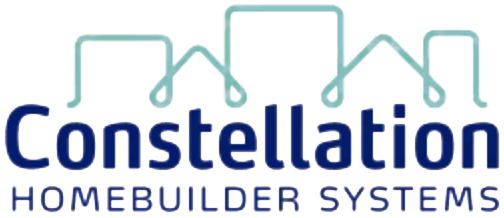Technology
Builders Prepped For Bumpy Times; Now They Need Agility To Ride Them Out
With volatility running off the charts, trying, learning, and refining so that your team can secure gains without backsliding and avoid populating missteps into a process that must happen fast and work right the first time is a table-stakes condition of survival.

If builders are counting on strong balance sheets, limited land risk, solid product offerings, good teams, and a hard-won cushion of gross margins as their best bet to withstand bumps, bruises and shocks ahead, they'll need at least one additional measure of help.
All of those pluses will need to work hand in hand with another skillset altogether, given the latest gale force headwind – a banking crisis and financial disruption.
Agility.
Here's why.
We'll start with a data point that jumped out and called for attention during Lennar strategic executives' commentary on the company's Q1 2023 earnings last week.
Here it was, almost mid-March 2023, and construction cycle durations were running longer, not shorter.
Lennar co-CEO and co-president Jon Jaffe goes to some lengths to explain the cycle-time backslide Lennar operators have experienced, and expectations for improvement here:
For the [first] quarter, cycle time increased [from 211 days up to 219 days] 14 days and 8 days year-over-year and sequentially, respectively. As we move into the second quarter and beyond, we will continue to close more of the homes started last year, which were heavily impacted by supply chain disruptions, eliminating those longer duration homes from our inventory. Our cycle time also benefits from the greater availability of material and labor due to the significant reduction in housing starts. As we've previously discussed, our overall cycle time increased about two months from pre-pandemic conditions.
The bulk of this affected the frontend of construction, as there are fewer opportunities to build out of sequence at the front end as compared to the back end. For example, we can't put on the roof without the wall, but we can install toilets without the windows. There has been significant improvement in recapturing time at the front end. By the end of our first quarter, we have reduced front-end cycle time by over two weeks from our peak.
Currently, we are on a pace of improving cycle time by a few days each week. We will have to wait and see how long this trend can be maintained, or potentially even improve on the trend.
This will depend on some lingering supply chain issues such as transformers, labor remaining in the workforce as starts decline, and appropriate staffing levels at municipalities.
Reducing our cycle time over the next few quarters will free up a significant amount of cash that is tied up in our inventory further strengthening our balance sheet.
Meanwhile, the relative importance of the cycle-time data point spirals upward sharply now. Two different but related reasons that will impact homebuilders to different degrees than Lennar – some far more, a few maybe less – drive the urgency.
One reason traces to ongoing fallout from the Fed's year-long goal to catch-up with and crush inflation, using interest rate policy to ratchet housing costs and construction and real estate development activity down as a disinflation tool.
The other stems from more recent excitement in banking, which as it plays out, could disrupt commercial lending. mortgage activity, and even some depositors' bank assets, not to mention rattling confidence and undermining consumer behavior.
Even before this week's Fed meeting and its decisions on its next Fed Fund Rate policy actions and outlook, volatility took over as the catch-all for characterizing business conditions, especially in a market-rate single-family new-home market that's either got way too much or way too little inventory in its near-term pipeline.
A still-clarifying and unwinding banking crisis adds step-change complexity, risk, and questions as to effects on both the duration and trajectory of challenges that pre-dated the Silicon Valley Bank failure two weeks ago.
Fact is, whether or not the challenge is existential or merely material to a year or two's profit and loss statement, every homebuilding entity – small, medium-sized, or enterprise – faces an identical challenge: They have to thrive in a low-to-no-margin-of-error window, or else.
That means vacuuming out unpredictability from every part of the start-to-completion build cycle, and locking in predictability its place.
All in, the cycle time data point nests in a tricky 20-or-more variable system of costs, revenues, modifications, and adjustments that will either reward or punish homebuilding operators as they navigate one of strategic advisory's unprettiest acronyms, VUCA, over the next eight to 32 months.
VUCA – coined in the 1985 book “Leaders -The Strategies for Taking Charge,” by economists Warren Bennis and Burt Nanus – stands for volatility, uncertainty, complexity, and ambiguity.
Strategic guru Joseph Michelli – who works directly with several homebuilding enterprises – writes about VUCA's volatility ingrediant, and it's strategic and operational antidote here. Michelli notes:
Volatility is best described as rapid and unpredictable change. Contrary to popular belief, individuals and organizations do crave change.
The movie Groundhog Day demonstrates how miserable we would be if nothing changed day-to-day. While change is welcomed, we want it on our terms, in ways we can predict, and at a manageable pace.
Unfortunately, a global and digitally interconnected economy magnifies the speed and unpredictability of change. So, how do individuals and businesses thrive in a Volatile world? The short answer is to develop “learning agility.”
Learning agility is an individual and business competency, defined by researchers David Hoff and Warner Burke as:
dealing with new experiences flexibly & rapidly by trying new behavior, getting feedback on those attempts & making quick adjustments so new learning occurs when you do not know exactly what to do."
Now, the practical, tangible, and operative terms for homebuilders -- still struggling as Lennar is to bring their end-of-last year's starts through to completion by back-end materials and products suppliers and trades -- have to do with the speed of learning and the deftness, decisiveness, and synchrony of acting on that learning ... as one whole, cohesive team.
With volatility running off the charts, trying, learning, and refining so that your team can secure its gains without backsliding and avoid populating missteps into a process that has to happen fast and be right the first time is a table-stakes condition of survival.
Agility – and the nimbleness and lightning quick impacts it can yield – need not be extravagantly expensive. It's more a matter of embracing a process pivot.
To appreciate agility, it may help to clarify what it is not. Constellation HomeBuilder Systems counts out nine factors that conspire against agility by focusing on a common process point homebuilding operators can easily remedy, i.e. team members working off discrete Excel spreadsheets to manage business operations that directly and indirectly impact one another.
Here's Constellation's 9-point case for a pivot away from Excel into a shared Common Data construction management solution that responsively adjusts – real time – to opportunity, challenge, and action items.
How Excel is Harmful to Your Construction Company
- No real-time updates—once data entry is complete and shared with the team, the information is old.
- Errors happen—there are no checks and balances. Human data entry errors occur and can lead to major consequences. User formulas can be altered.
- Not user-friendly—team members will have different levels of Excel knowledge. This usability gap can lead to mistakes and inefficiencies.
- Not Industry Specific—Excel is generic software so it doesn’t provide the tools needed to run a construction company.
- Manual data entry—there is no automation or consistency and it can take weeks to compile documents.
- Lacks Sharing Features—Excel limits the use of a spreadsheet to one person at a time. Shared documents lack the ability to collaborate as a team.
- Easily Hacked—security is a significant issue for homebuilders. Excel documents are usually stored on a computer’s hard drive or shared digital drives. This puts the data at risk for unauthorized access.
- No Scalability—Excel can’t grow or shrink affecting productivity. Initial set-up time for templates and formulas can be extensive and is vulnerable to errors.
- No Dedicated Support Team—there is no support to assist construction companies to respond quickly so there’s a greater risk of system downtime and reduced productivity.
Fact is, most homebuilders are going to win or lose in a VUCA stretch ahead based on their ability to measurably improve price, absorption pace, production cycle, input cost reduction, value engineering, land cost optimization, and ultimately, market share gains, margin expansion, and new explosive growth opportunity ... all better than the other builders.
To succeed, they'll need to birddog random, elusive, and to-date unpredictable outcomes and memorialize them into a predictable, reliable system. Agility is the first order of business, and that will only be an available option to those whose holistic recognition, management, and leverage of operational data – trapped today in Excel spreadsheets – gets released by getting synched up.
Constellation provides fully-integrated or standalone software solutions expertly engineered to manage the complete ecosystem of a homebuilder’s business functions and growth.
MORE IN Technology
How A Broken Furnace Led To An Innovative New Power Solution
With new and emerging Federal and state energy credits that homebuilders and residents can tap into, the system nets out to an expense win on both fronts.
Ground Control: Creating A Digital Marketplace To Move Dirt
A $100 billion-a-year lending pool to acquire and develop the ground for homesites partially supports a parallel universe $50-billion addressable market that begs for a solution to a pain point: moving dirt.
Tapping Linda Mamet As EVP, Tri Pointe's Tech-Fueled Future Accelerates
"We can now focus fully on ideas like a single source of truth. This means holistic integrations among our platforms – where information moves meaningfully in real-time, back-and-forth between what the customer is doing and what we are doing internally." -- Linda Mamet, EVP, Tri Pointe Homes


